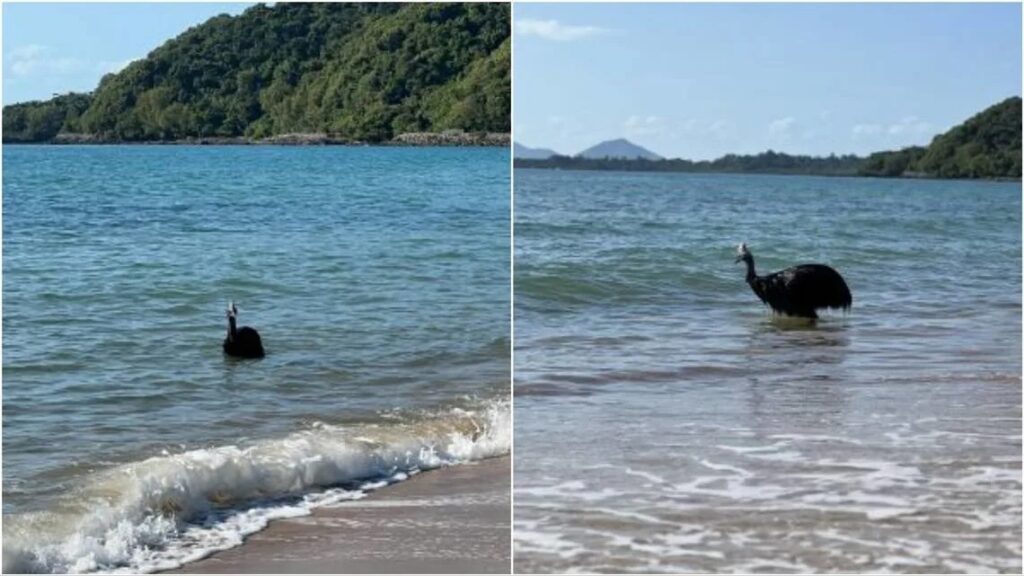
Beachgoers at a campground in Australia were left stunned as a large and “unpredictable” bird emerged from the ocean in a surprising display of aquatic prowess, captured on video and shared by wildlife officials.
On October 31, onlookers at Bingil Bay Campground witnessed a mysterious creature swimming towards the shore, initially mistaking it for a turtle or shark. As it reached land, the true identity of the unexpected visitor was revealed – a juvenile cassowary, a large flightless bird native to the rainforests of Queensland and Papua New Guinea.
According to the Queensland Department of Environment and Science, cassowaries can grow up to 6.5 feet tall and weigh around 167 pounds, featuring a distinctive appearance with a colorful neck, a helmet-like structure on their heads, and a formidable dagger-shaped claw on their toes. Renowned as “the world’s most dangerous bird” due to their size, strength, and sharp claws, cassowaries are known for their unpredictable behavior.

The Queensland Department of Environment and Science explained that cassowaries are capable swimmers and may take to the water to cross rivers or evade threats from domestic dogs or rival cassowaries during territorial disputes.
“We’re not sure how long this animal was in the water or why it went for a swim, but the footage is astonishing,” commented Stephen Clough, a wildlife officer with the Queensland Department of Environment and Science.
The campground’s host, Nikita McDowell, managed to capture the cassowary’s unexpected ocean swim on camera. Footage shared on Facebook by 9 News showcases the large bird gracefully navigating the waves, with only its head and neck visible from a distance, resembling a periscope. As the cassowary reached the shore, its entire brown-black body came into view.

In the video, the cassowary seems to acknowledge the camera’s presence, turning its head several times. Notably, its head features a mohawk-like helmet structure, with hints of pink and blue coloring on its neck.
Describing the incident, McDowell told the Australian Broadcasting Corp., “It just floated to shore until it reached the level where its feet could touch the ground.” She added, “It must’ve been exhausted as it stood in the shade beneath a tree with its legs shaking for about half an hour. I went to make a coffee, and when I returned, it was gone.”
Assured of the cassowary’s lack of energy to pose a threat, McDowell expressed relief that the bird had moved on safely. Clough emphasized the rarity of the sighting and the importance of conservation, stating, “This rare sighting and lucky escape by the cassowary is a reminder that we all need to do what we can to protect and conserve the species.”
Highlighting the challenges faced by cassowaries, Clough mentioned that there are approximately 4,000 cassowaries remaining in Queensland, confronting threats such as habitat loss, vehicle strikes, and domestic dog attacks. The incident at Bingil Bay serves as a poignant reminder of the need to preserve and safeguard these remarkable birds.
Situated in the northeastern state of Queensland, Bingil Bay stands approximately 1,400 miles northwest of Sydney, providing a unique habitat for diverse wildlife, including the extraordinary cassowary.

Leave a Reply